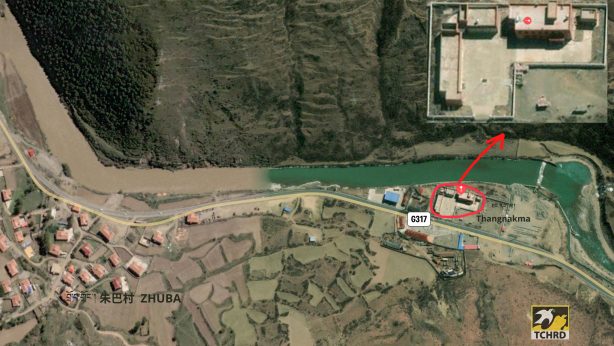Destruction of Serthar Institute: A Special Report
The summer and autumn of 2001 saw the dismantling of the leading centre for Buddhist scholarship and practice on the Tibetan plateau. In the 21 years of its existence, Serthar Institute (known as Larung Gar) had expanded from a solitary mountain hermitage to a spiritual oasis for over 8,000 monks, nuns, and lay students.
Khenpo Jigme Phunstok founded Sertahr Institute in Larung Valley near Serthar town, Karze Prefecture, Sichuan Province in 1980 to meet the pressing need for renewal of meditation and scholarship all over Tibet in the wake of China’s Cultural Revolution (1966-77). This non-sectarian academy drew nearly 1,000 Mainland and Overseas Chinese practitioners as students; their places of origin in June and July 2001. Chinese appointed “work teams” next targeted the over 4,000 Tibetan nuns forming Serthar’s affiliated nunnery. The official Beijing directive was to reduce their number to 400 and destroy their meditation huts to ensure the eviction was permanent.
According to monitoring agencies, over 1, 000 dwellings had been destroyed at Serthar by late October, thousands of monks and nuns had been successfully evicted, and Khenpo Jigme Phuntsook was believed to be incommunicado in Chengdu, the capital of Sichuan. The charismatic founder of Serthar had previously been removed from his institute for medical treatment at a military hospital in Barkham, Ngaba “TAP” (Tibet Autonomous Prefecture).
The removal of Khenpo Jigme Phunstok to Chinese custody, the eviction of the majority of Serthar Institute’s students, and the official ban on religious teachings and practices are the culmination of two years of escalating restrictions and propaganda campaigns instituted by the Chinese authorities against the Buddhist academy.
On 8 November 2001, China’s cabinet, the State Council, issued a 16,000-word White Paper hailing Tibet’s “modernisation”. It claims: “The Tibetan people’s freedom of religious belief, traditional customs and habits, and their freedom to study, use and develop their own language have been respected and protected.”
By striking at this remote and apolitical heart of Tibetan Buddhist scholarship, Beijing has succeeded in strangling a thriving revivalist movement in Tibet. In presenting Serthar Institute as a case study, the Tibetan Centre for Human Rights and Democracy is focussing on the People’s Republic of China’s (PRC) planned and systematic policy to deny Tibetans their right to practice religious freedom and preserve their cultural traditions.
Download the full report here.


